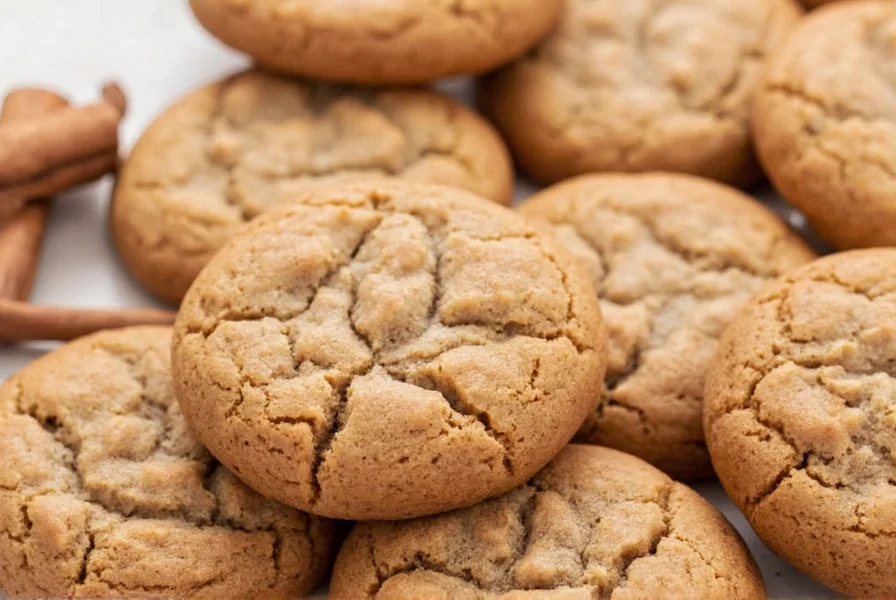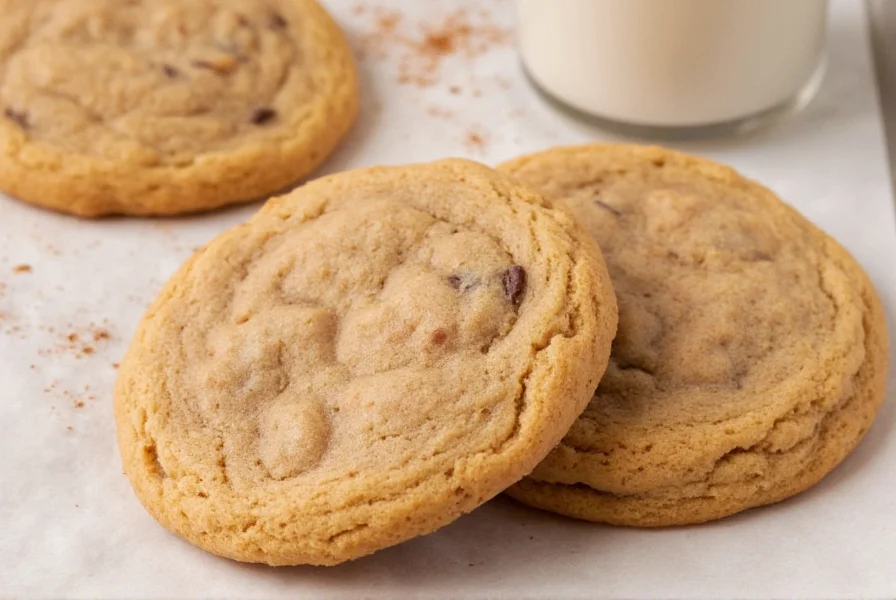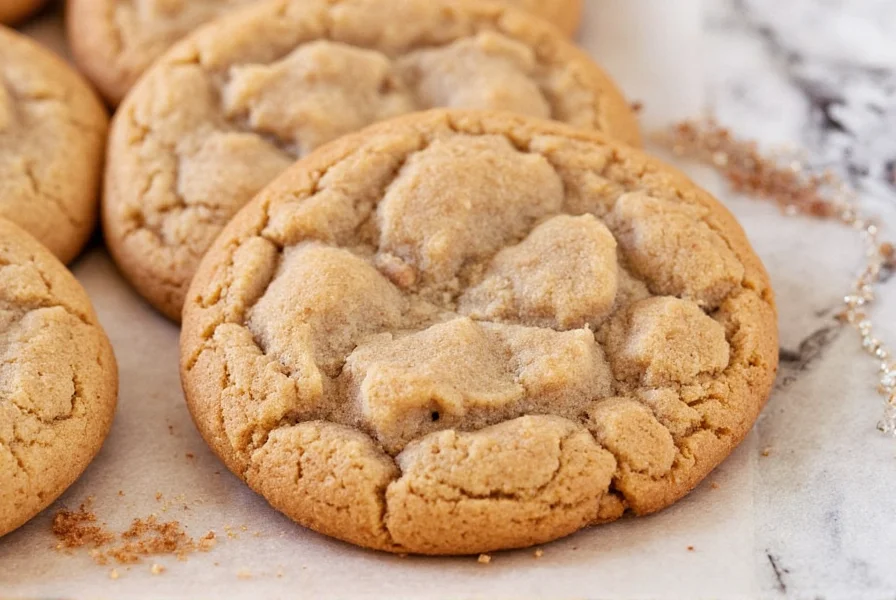The perfect cinnamon cookie recipe features a delicate balance of warm spices and buttery richness. This classic recipe yields 24 soft, chewy cookies with a crisp cinnamon-sugar exterior, requiring 15 minutes of preparation and 10 minutes of baking at 350°F (175°C). Key ingredients include 1 cup (226g) unsalted butter, 1 cup granulated sugar, 1 large egg, 2¾ cups all-purpose flour, 2 teaspoons ground cinnamon, and 1½ teaspoons baking powder. For optimal texture, chill the dough for at least 2 hours before baking.

The Ultimate Cinnamon Cookie Recipe: A Baker's Guide
Nothing compares to the comforting aroma of freshly baked cinnamon cookies filling your kitchen. These simple yet sophisticated treats combine the warmth of cinnamon with a perfectly balanced sweet-tangy flavor profile that makes them irresistible. Unlike many recipes that produce dry or overly spicy cookies, this method ensures consistently soft centers with slightly crisp edges—the hallmark of professional-quality cinnamon cookies.
What sets this cinnamon cookie recipe apart is its attention to ingredient temperature and mixing technique. Using room-temperature butter and egg creates the ideal emulsion, while the precise cinnamon-to-sugar ratio prevents overwhelming spiciness. The inclusion of both granulated and brown sugar provides complex sweetness with subtle caramel notes that enhance the cinnamon flavor without masking it.
Essential Ingredients for Perfect Cinnamon Cookies
Quality ingredients make the difference between ordinary and extraordinary cinnamon cookies. Here's what you'll need for this classic cinnamon cookie recipe:
| Ingredient | Measurement | Key Purpose |
|---|---|---|
| Unsalted butter | 1 cup (226g), room temperature | Creates rich flavor and tender crumb |
| Granulated sugar | 1 cup (200g) | Forms crisp exterior and caramelization |
| Brown sugar | ½ cup (100g), packed | Adds moisture and complex sweetness |
| All-purpose flour | 2¾ cups (347g) | Provides structure without toughness |
| Ground cinnamon | 2 teaspoons | Delivers warm, aromatic spice flavor |
| Baking powder | 1½ teaspoons | Ensures proper rise without cakey texture |
Step-by-Step Baking Instructions
Preparing the Dough
- Cream together butter and sugars until light and fluffy (about 3-4 minutes). Proper creaming incorporates air for optimal texture.
- Add egg and vanilla, mixing until fully incorporated. Scrape bowl sides to ensure even mixing.
- In separate bowl, whisk dry ingredients: flour, cinnamon, baking powder, and salt.
- Gradually add dry ingredients to wet mixture, mixing just until combined. Overmixing develops gluten, leading to tough cookies.
- Cover dough and refrigerate for minimum 2 hours (or up to 72 hours). This crucial step prevents excessive spreading.
Baking for Perfect Results
- Preheat oven to 350°F (175°C) with rack in center position. Line baking sheets with parchment paper.
- Prepare cinnamon-sugar coating: Mix 1½ cups sugar with 3 tablespoons cinnamon in shallow bowl.
- Roll chilled dough into 1.5-inch balls, then roll in cinnamon-sugar mixture until completely coated.
- Place balls 2 inches apart on baking sheets. Slightly flatten each with palm of hand.
- Bake 9-11 minutes until edges are set but centers appear slightly underdone. Rotate sheets halfway through baking.
- Cool on baking sheet for 5 minutes before transferring to wire rack. This allows cookies to set properly.

Proven Baking Techniques and Variations
Master these professional techniques to elevate your cinnamon cookies from good to exceptional:
Temperature Control Secrets
Maintain consistent oven temperature by using an independent oven thermometer. For chewier cookies, slightly underbake by 30-60 seconds—the residual heat continues cooking them on the baking sheet. If your kitchen is warm, chill baking sheets in freezer for 10 minutes before placing dough balls on them to prevent premature spreading.
Flavor Enhancements
- Cinnamon roll cookies: Add 2 tablespoons cream cheese to dough and swirl with cinnamon-brown sugar filling before baking
- Gluten-free version: Substitute all-purpose flour with 1:1 gluten-free baking blend and add 1 teaspoon xanthan gum
- Vegan adaptation: Replace butter with vegan butter sticks and egg with flax egg (1 tbsp ground flax + 3 tbsp water)
- Spice complexity: Add ¼ teaspoon each of nutmeg and cardamom for deeper flavor profile
Troubleshooting Common Issues
Even experienced bakers encounter challenges with cinnamon cookies. Here's how to solve frequent problems:
Why Your Cookies Spread Too Much
Excessive spreading typically occurs when butter is too warm or dough isn't sufficiently chilled. Always use room-temperature (not melted) butter, and refrigerate dough for minimum 2 hours. If cookies still spread, add 2-3 tablespoons additional flour to dough. For high-altitude baking, reduce baking powder by ¼ teaspoon.
Fixing Dry or Crumbly Texture
Dry cookies usually result from overmeasuring flour. Spoon flour into measuring cup rather than scooping directly from bag. If dough feels too dry before chilling, add 1-2 teaspoons milk or cream. For already-baked dry cookies, place a slice of bread in storage container overnight to restore moisture.
Storage and Serving Recommendations
Store cooled cookies in airtight container at room temperature for up to 5 days. For longer storage, freeze baked cookies between layers of parchment paper in freezer-safe container for up to 3 months. Thaw at room temperature for 30 minutes before serving.
Serve cinnamon cookies slightly warmed with a glass of cold milk or alongside vanilla ice cream for an indulgent dessert. They also pair beautifully with coffee or chai tea. For special occasions, sandwich two cookies with cream cheese frosting for an elegant presentation.
Frequently Asked Questions
Can I make cinnamon cookies without chilling the dough?
While possible, skipping the chilling step significantly impacts texture and spread. Unchilled dough spreads excessively, creating thin, crispy cookies rather than the desired soft-centered treats. For best results, chill dough minimum 2 hours. In a time crunch, freeze dough balls for 15 minutes before baking as a partial substitute.
Why do my cinnamon cookies taste bitter?
Bitterness typically comes from expired baking powder or using cinnamon that's been stored too long. Check your baking powder's freshness by mixing 1 teaspoon with 1/3 cup hot water—it should bubble vigorously. For cinnamon, purchase small quantities from stores with high turnover, and replace every 6-12 months for optimal flavor.
How can I make my cinnamon cookies chewier?
For chewier cinnamon cookies, increase brown sugar to 3/4 cup while reducing granulated sugar to 3/4 cup. Underbake by 1 minute, removing cookies when centers still appear slightly underdone. Using bread flour instead of all-purpose flour (which has higher protein content) also enhances chewiness without compromising flavor.
Can I use cinnamon sticks instead of ground cinnamon?
While cinnamon sticks provide excellent flavor for infusions, they don't work well in cookie dough. Grind sticks in a spice grinder to make fresh cinnamon powder, but note that stick-to-powder conversion isn't 1:1—you'll need approximately 3 inches of stick for 1 teaspoon ground cinnamon. Freshly ground cinnamon has more intense flavor, so reduce quantity by 25% to avoid overpowering the cookies.
What's the best way to measure sticky ingredients like brown sugar?
Pack brown sugar firmly into measuring cup until it holds shape when inverted. For honey or molasses, lightly coat measuring spoon with cooking spray first to prevent sticking. When measuring butter, use the water displacement method: place 1 cup water in measuring cup, then add butter until water reaches 1¼ cup mark for 1/4 cup butter.











 浙公网安备
33010002000092号
浙公网安备
33010002000092号 浙B2-20120091-4
浙B2-20120091-4